
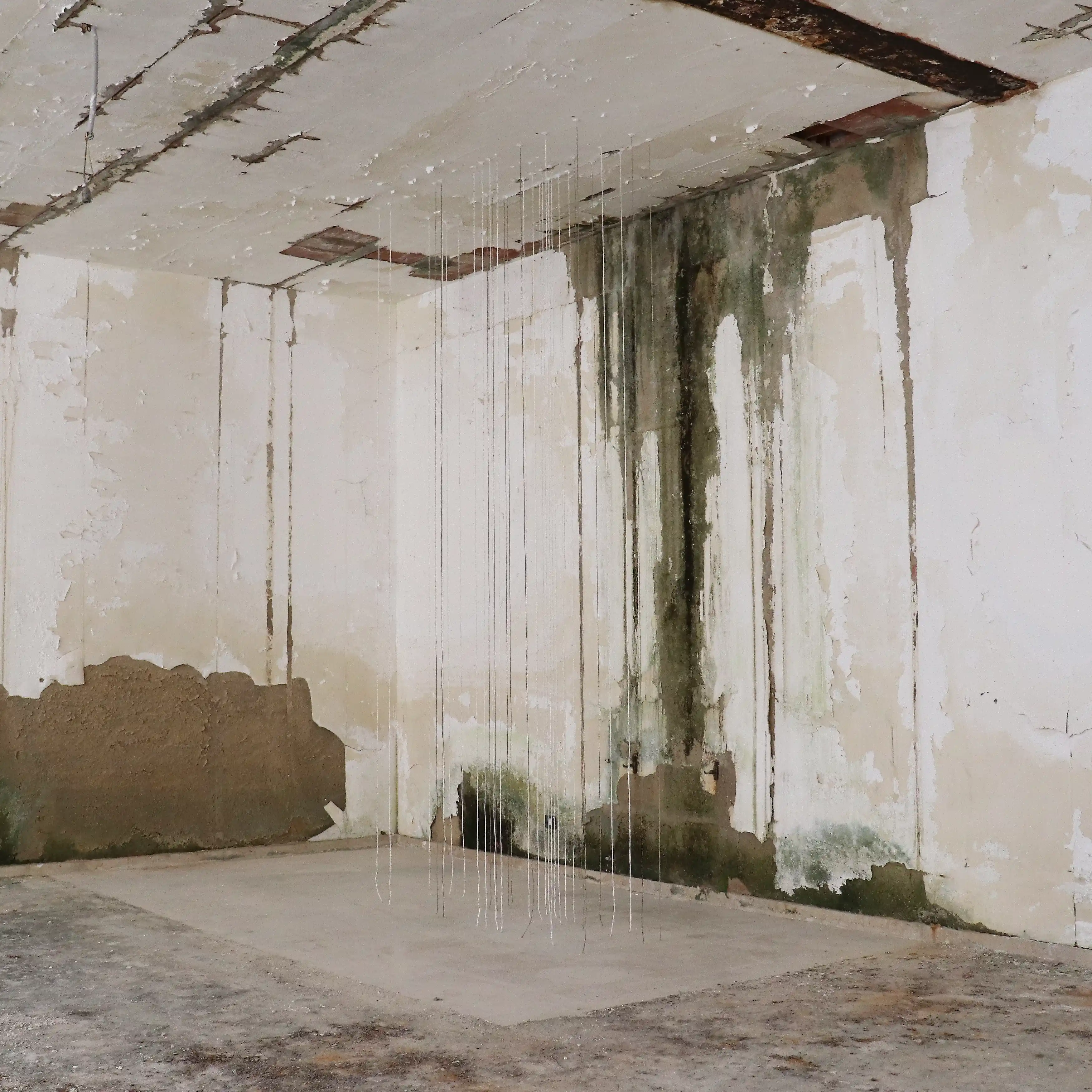
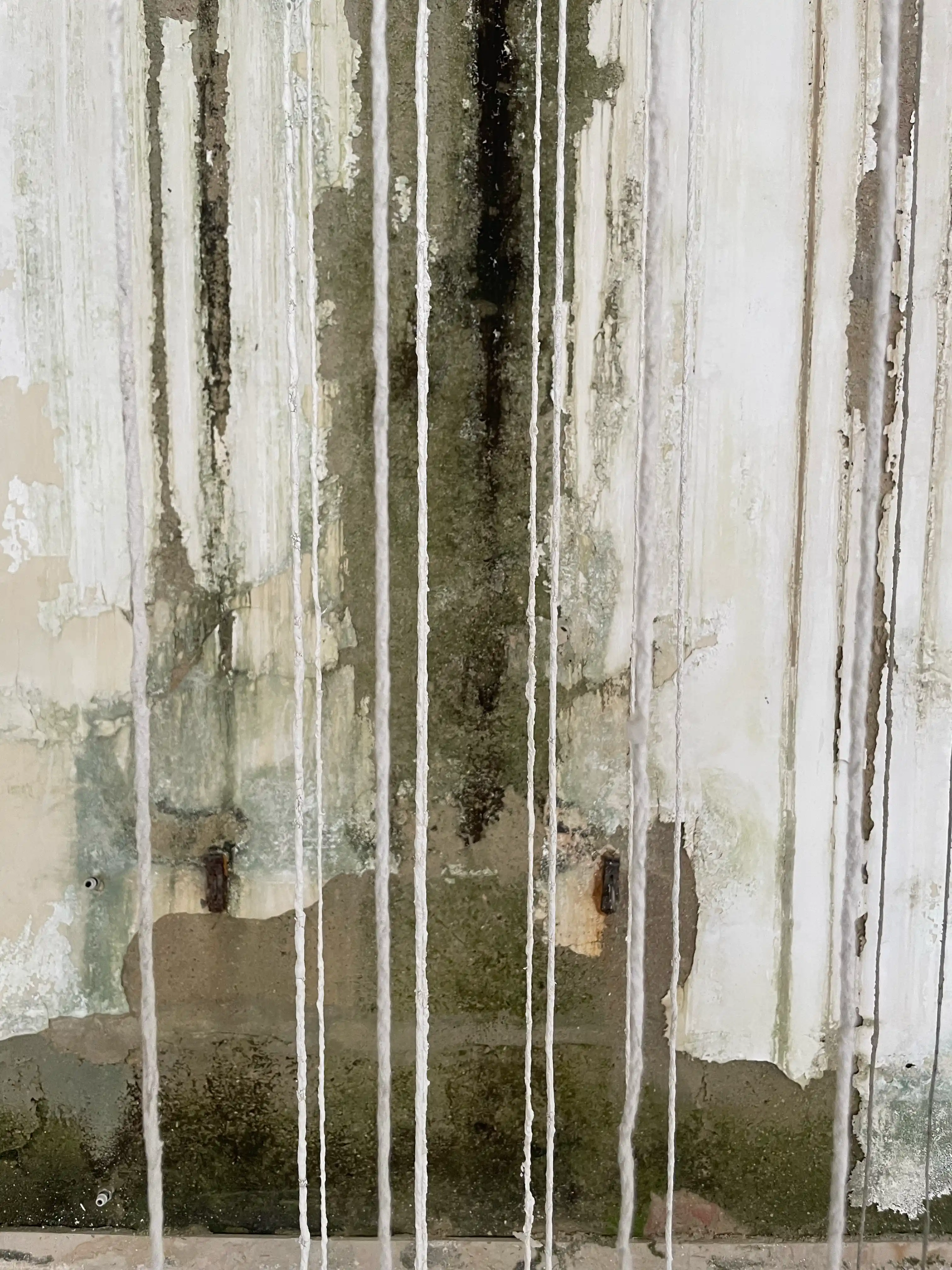
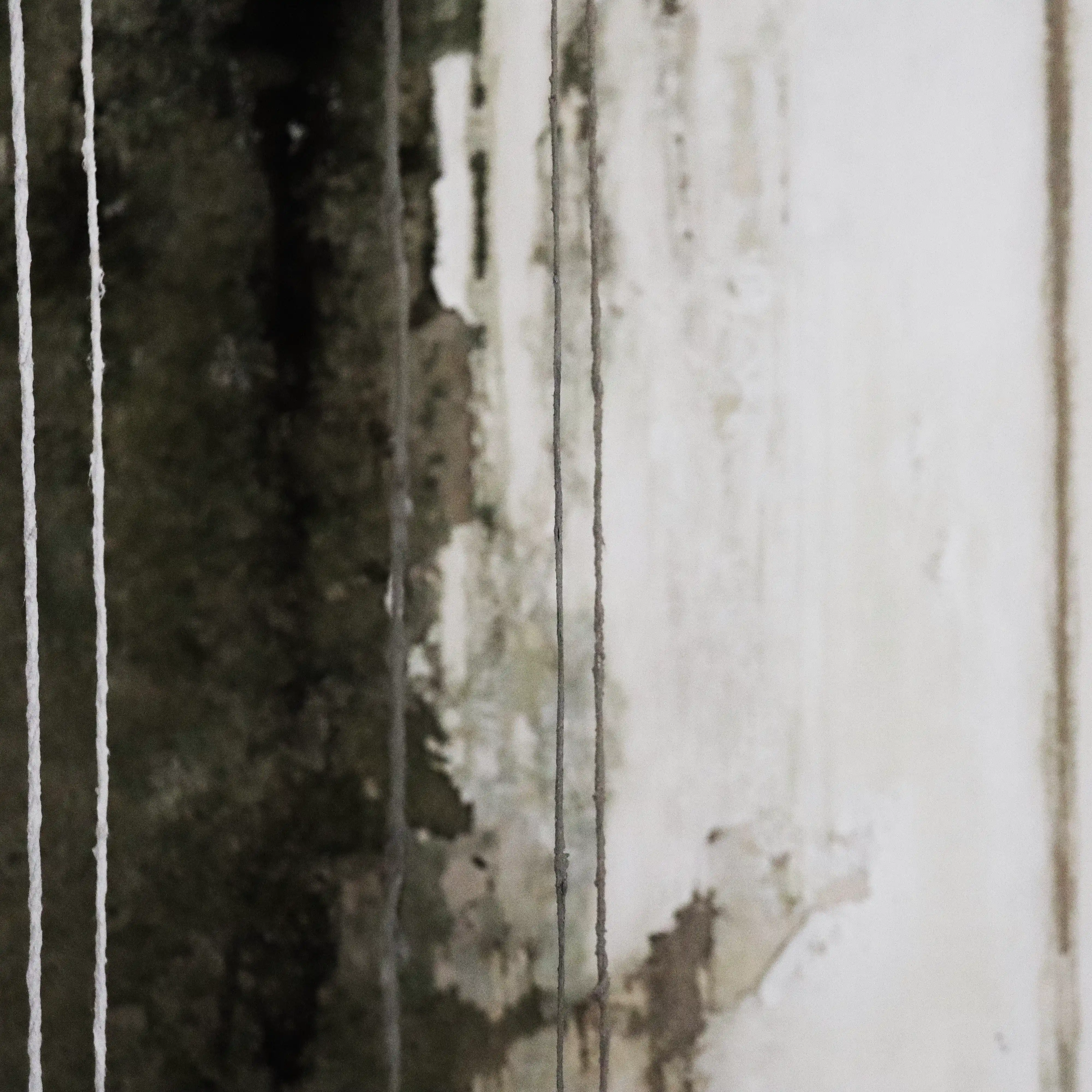
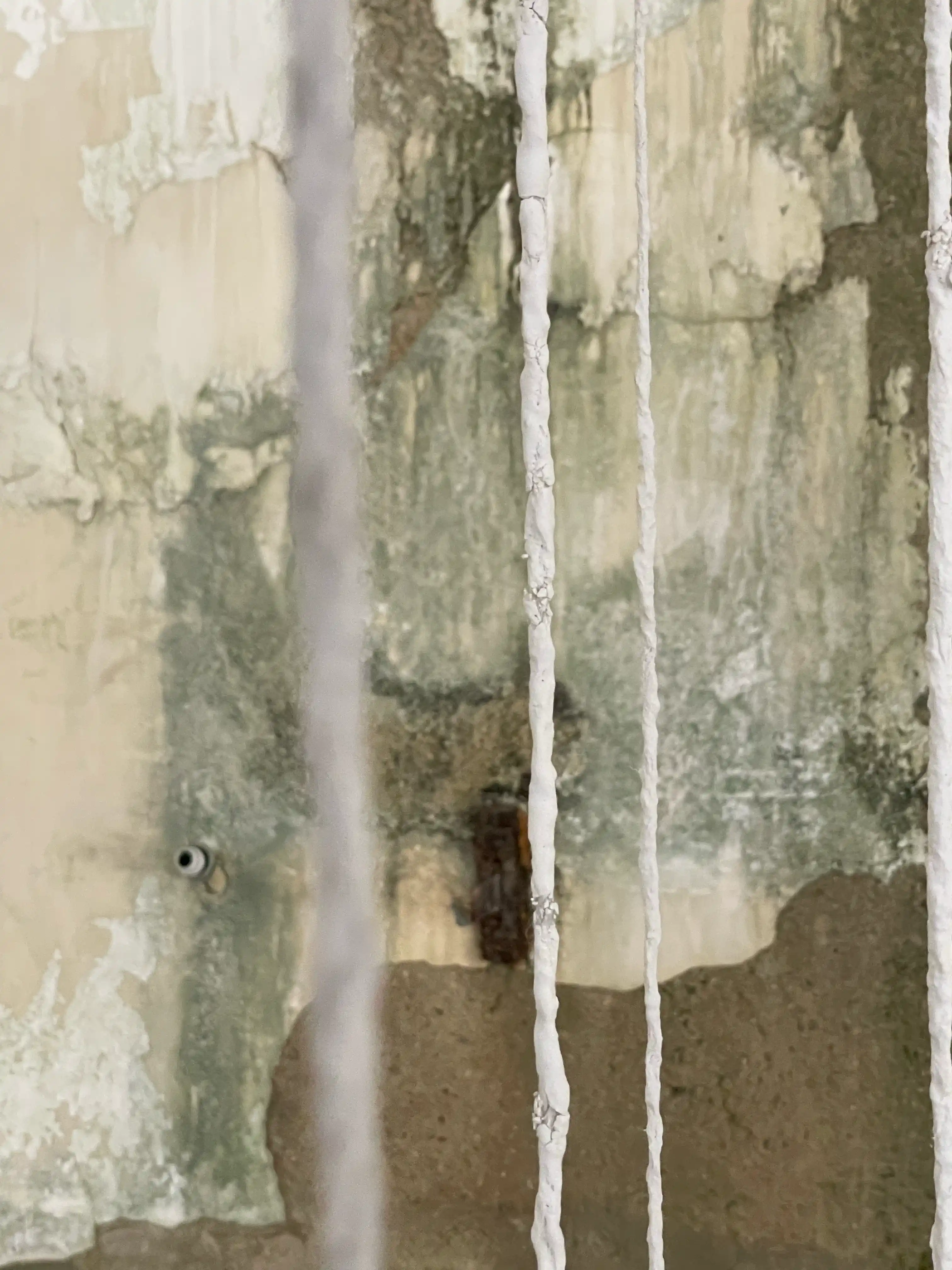

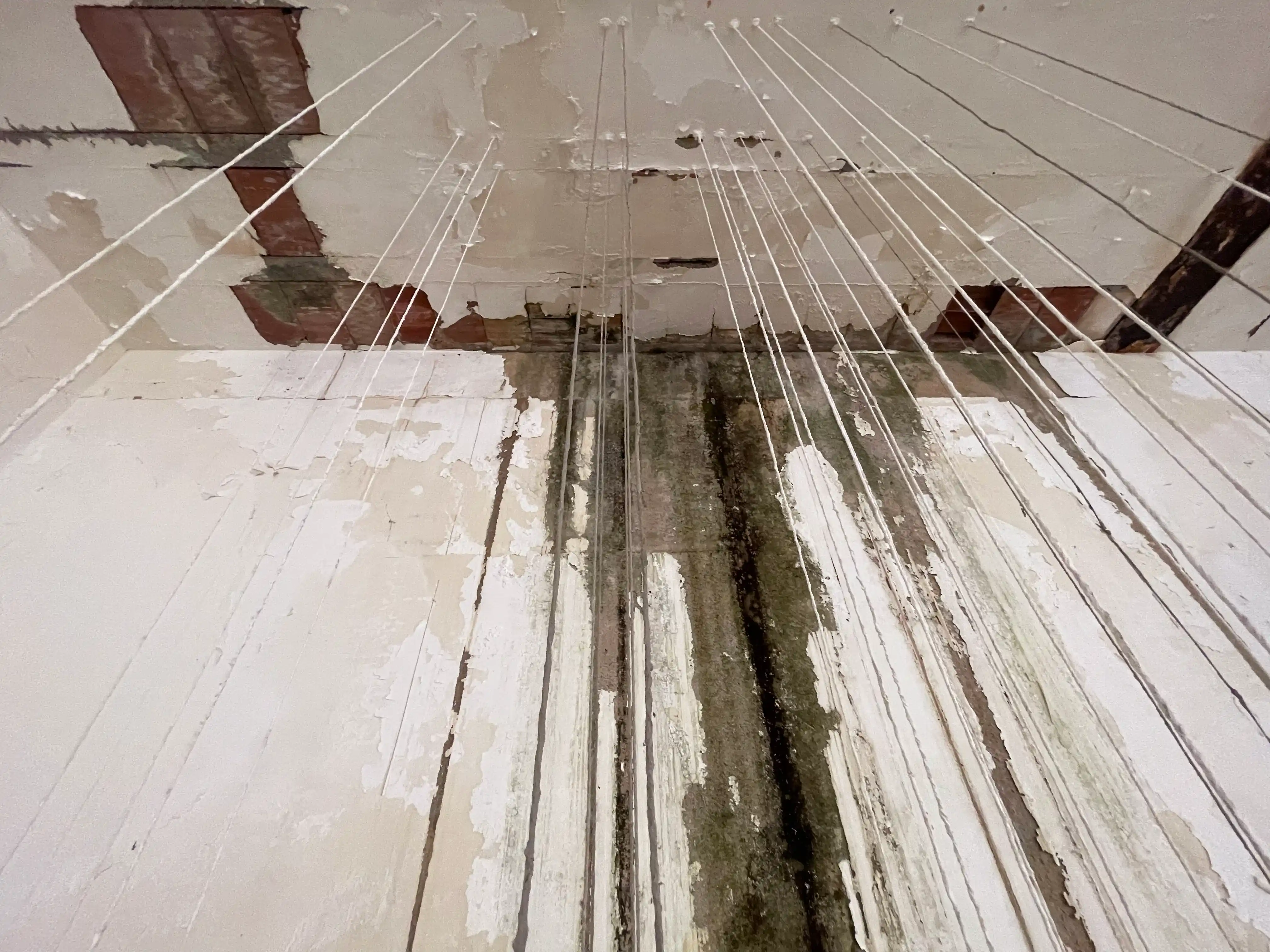

Antichó, 2025
yarn, plaster, clay, site sediment
'Antichó' (αντηχώ, “resonate” in Greek) is an attempt to echo the space back to itself — to give form to what is visible now and to what has quietly accumulated over time. The work considers how patterns emerge; it absorbs the space as much as the space absorbs it.
Inside, the architecture has become a surface that registers the environment. Rainfall over decades has created vertical erosion traces along the interior walls, forming a slow archive of exposure and gravity. These rain traces inside the building have a structure that is here given a three-dimensional form.
A grid structure from ceiling to floor forms a spatial system that recalls measurement, rhythm, weight, fall. It mirrors the directional logic of the water's path while introducing a spatial rhythm.
Strands of yarn, a porous material that retains moisture and residue, are coated in plaster and clay with embedded site sediment, mold and lichen. These complex biological components operate on a slower, often imperceptible scale. Their presence connects the work to the building's own ongoing processes of transformation and adaptation.
'Antichó' places existing systems into a new spatial relationship. It activates the viewer's perception of their surroundings, emphasising the subjectivity of experience and thus, reality. The work unfolds through movement; as the viewer shifts position, their understanding of form and space changes in response.
It resonates through alignment.